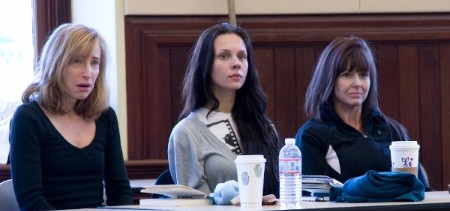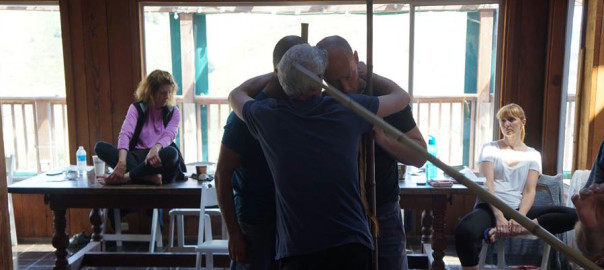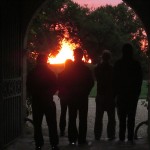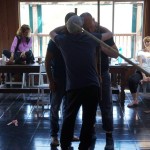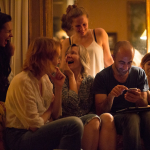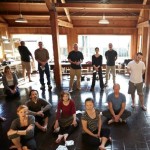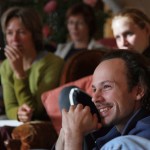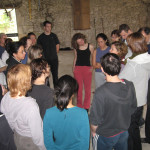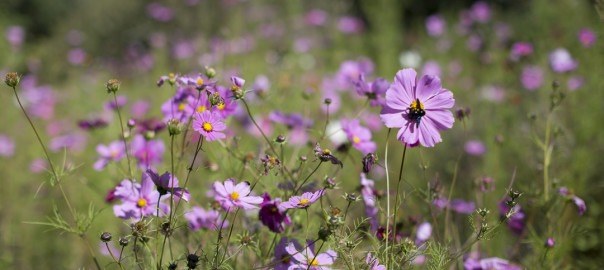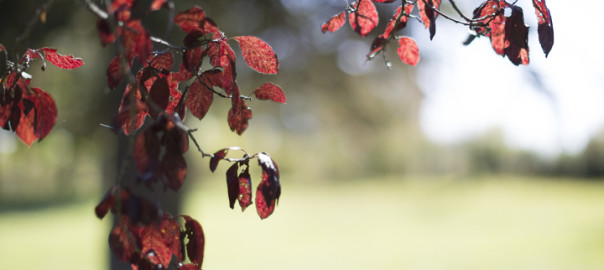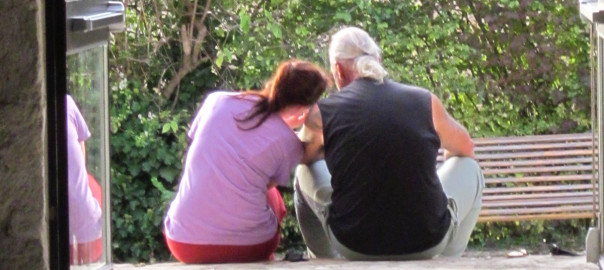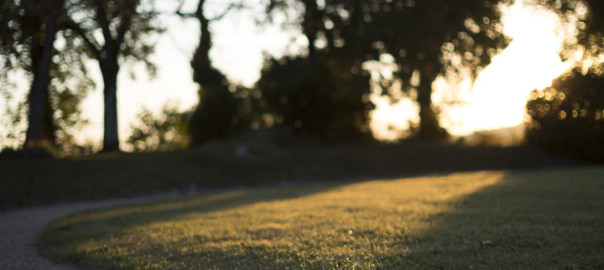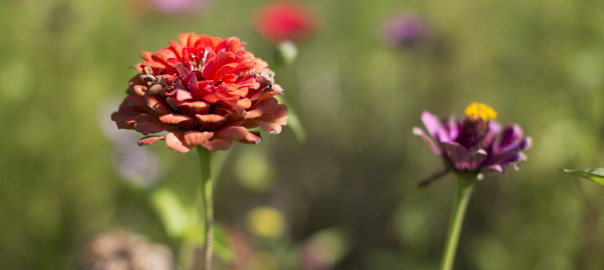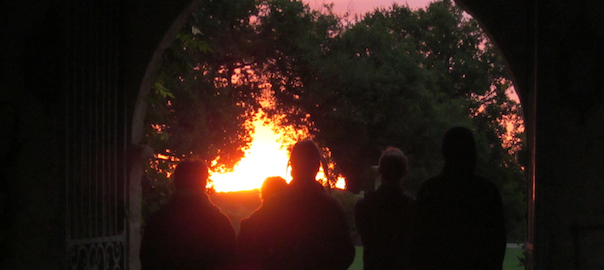Since you’ve touched on it, could you address in more detail physical health and well-being?
Anyone can lay out some kind of ideal physical program, exactly what you “should” do, so I don’t know if I can offer much help in that department. As I’ve mentioned too often before, we are governed, and specifically our physicality is governed, by fairly strict rules, which are easily observable in nature. We have some freedom to manipulate some of these, but really not by very much. Everyone knows, or at least has the information, about the horrors of ignoring health issues and expecting your body to do what you want it to do with the least investment in it. Another “authority” telling you what you should do is not the answer.
Beyond this, ironically, many of the institutions that run the economy, such as medicine, education, law and even psychology are largely dependent upon failing health. If you add up the amounts of money exchanged in the control, anticipation and reaction to failing health (insurance, pharmaceutical research and products, reactive or compensatory medicine, related legal issues, consultation and therapy for those who are unwilling to improve their physical health and claim or believe the problem is elsewhere, etc.), you end up with an enormous chunk. To keep that moving, we need people to be sick. Then we have the extreme social emphasis placed on the pursuit and maintenance of a lifestyle based on making money at any cost, often at the sacrifice of health, sanity and well-being. Few persons would place money at the head of their list of values, yet in actuality, the amount of time and energy invested in making or spending it far exceeds investment in anything else. Getting down to the gym a couple days a week and having low-fat milk in your morning latte isn’t going to make much of a dent in a system or lifestyle that is essentially, well, unwell.
How to maneuver through all this, and be truly well, is no small trick.
Setting aside more profound issues, such as the value of attending to one’s conscience, performing work that is engaging and purposeful, and noticing why you’re alive in the first place, the real problem is finding a way to create and sustain a lifestyle that allows for and supports your real, nonnegotiable, physical needs. Many needs are unique to the individual, such as how much solitude one requires to remain sane—and that is a physical need, not only a psychological one—but there are some basic ideas that are pretty much universal. Please remember in all this that I’m not trying to design some ultimate program, which is a lot easier to do but would be absolutely abstract. One has to think in terms of balancing the reality of one’s circumstance with the components of one’s being—finding a way to harmoniously blend the two.
To do that well, some sacrifices and adjustments are inevitable. And that implies going up against the walls of opposition, both internal and social. No one will improve his health significantly without accurately perceiving priorities, knowing clearly what is at stake if those are not attended to and what is to be gained if acted on correctly. That’s the basic homework before any change can come about. Then that knowledge has to be transformed into a sustainable motivation. “Look, you’ll feel and perform better,” “You can do it!” and, “You’re going to get sick and die if you don’t,” are already out there in many forms as motivational information, with a long-term success rate of less than one percent.
Having said all that, one could look at this entire dynamic kind of like being in prison, with enormous limitations and impositions, but still with some freedom to be creative. Each item on the list I gave as priorities for physical well-being—posture, breathing, exercise, food and rest—are possible to manipulate and progress with in any situation, including an actual prison. If you want, I can pick each of these apart, but I’m not going to sell you on their value; that’s something you must discover yourself.
Posture is, I think, probably the most underrated of all items on this list. Besides having been identified recently as the single most important factor in what men find sexy in women, the list of how correct posture influences internal organs and systems, and also mood and general energy, is very long indeed. Your internal environment depends on the efficiency of the flow of elements within it. Obviously, this includes oxygen, blood, hormones and nutrients, but also all interaction between nerves and the brain. The spine, which is your foundation and support, has a natural position that guarantees the efficiency of movement and interaction of the related elements. Your internal organs are all right alongside the spine and depend on its correct position to function well. Any prolonged restriction or deviation from this natural position will result in some, at least partial, dysfunction. Over a long time, the results can be devastating.
The typical image of a depressed, lazy and tired person is someone hunched over and inert. Often, the assumption is that if one had more enthusiasm and inspiration, he would then stand up straight and move. In many cases, this equation is backward. But, as with everything related to one’s physicality, balance is the key. An overly erect and rigid posture may convey confidence and power to some, but it also causes a subtle accumulation of tension and rigidity on various levels, including psychological and emotional. Check it out. Find someone who looks like they have a steel rod up their ass and spend a few minutes with them.
For myself, I like the image often used in ballet classes, where one looks for the sensation of being gently pulled up from the top, not the front, of the head. That is, you’re not looking to hold the posture by contracting muscle; the sensation is one of lift and space between the vertebrae. Open chest, for sure, but also a slight indentation at the base of the spine, which I experience as a falling forward and down of the lower abdomen, causing a subtle backward tilt of the pelvis. Careful of too much muscle in the upper or lower back, and let the shoulders fall directly down, not forward or back. Someone with great posture gives the impression that they have an unusually good relationship with gravity, as if they float a bit (even with their lower body solidly into the ground).
And while floating (even with your lower body solidly into the ground), it becomes a lot easier to breathe well. As with posture, I’m not a fan of control. The body knows what to do when given the chance. Of course, if you’re sitting at a desk all day long, it doesn’t really have a chance, so you’re obliged to compensate for the absence of freedom. And I believe freedom is the word here. Weak, forced or restricted breathing will cause the same thing with whatever you’re focusing on at the desk or anywhere else. “How was work today, honey?” “Weak, forced and restricted.” The quality of one’s breathing has a remarkable capacity to penetrate any and everything one is engaging.
I’ve already discussed breathing elsewhere, so I won’t spend much time with it here, and there are some decent books on the subject. Indeed, the essential dynamic underlying almost every elite and esoteric physical art is work with the breath, so there’s information available. I would only add that it’s unfortunate that so much work is done with it, and not much play. Laughter has got to be the single healthiest activity one can perform. Just think how healthy you would be if you could sincerely laugh at that which now oppresses you. I’ve mentioned before that one good measure of someone’s depth of spirituality is how long it takes before they become offended. Imagine laughing hysterically at the criticisms, complaints and impositions you receive. At the least, you’d be breathing well.
When you’re not laughing, though, your breathing should be sexy, like posture: voluptuous, uninhibited, graceful and natural.
Which also happens to be a good list of qualities for an exercise program. In my experience in working with professional athletes and dancers, I’ve often been surprised by the evident lack of real versatility in their physical maintenance program. Almost everyone tends to exploit what they are good at, or what comes easiest, and ignore what they really need. Any authentically whole physical exercise program must include an evenly distributed focus on the full range of the human body’s naturally existing potentials, no matter how specialized one wishes to be. Otherwise, injury, malaise and nagging restrictions are inevitable.
The human body, like the human mind, is best at versatility and adaptability. This is our greatest skill and our greatest chance to unlock natural potential. What that means in terms of physical movement is that a fairly equal amount of time and effort should be allocated to the widest possible range of activity. That includes strength, flexibility, precision and endurance, but it certainly doesn’t stop there.
For example, virtually every elite training program lacks real range in dealing with speed (or timing, really) and transition. And every program lacks true development of spontaneity. The memorization of specific movements and sets of movements certainly has a value up to a point, but the human body, like any other animal, does not naturally move in geometrical patterns. If a body is consistently trained to do so, the first movement out of what is familiar is not only awkward and ineffective, it is likely to cause injury. The same with speed. Your body has at least five speeds. I don’t know how many yoga practitioners I’ve worked with who had no idea at all of how to move naturally and well outside of their practiced range of speed (second gear and sometimes first), which is unfortunate, because often exactly what they are looking for is on the other end of the spectrum they’re working on. The exact same thing is true for a number of athletes I’ve worked with who specialize in timing, like baseball hitters, or martial artists (forth gear and sometimes fifth); they never conceived of the idea that to understand how time works, and how to master dealing with it, one must have exceptional attention to detail within a single second, and that necessitates slowing that second down so that it looks like a few seconds. At least half of that work involves knowing how to move slowly and precisely, and being completely comfortable doing so. As with all forms of specialization, one lives and analyses data within a frame, unaware that the solution is most often just outside of that frame. Never underestimate the depth of your subjectivity.
What does all this mean for the average person looking to construct an effective physical exercise program? Think versatility. We don’t live in nature and interact with it such that surprising and varying situations demand of us a full-range of skill in response. But we are genetically designed for that, and we function best in some version of it. If you always walk on a sidewalk that is flat and straight, of course the structural support in your ankles, knees and hips is not prepared for uneven terrain. And if you never have to climb a rocky hill or tree, you don’t have the true upper-body strength to handle spontaneous adjustment. You may be able to bench press 300 pounds, run a marathon, or sit in a full lotus for an hour, but those are not transferable to a million other more important physical skills, and very probably are a cause of more problems than not. I’m all for ritual and repetition in exercise, but if that does not include the consistent requirement for real adaptability and versatility, in space and in time and with real objects, it’s a lot more irrelevant than one and one’s fellow specialists would believe.
I understand, of course, that the common person usually exercises to improve image rather than well-being. But that’s not the subject of this letter.
Onto food and diet… What can one say? You can go to any bookstore or library and find conflicting advice in any two books sitting right next to each other. There’s probably some truth in each of them, although, like exercise, it’s a good idea to take a real look at the person who is giving the advice and determine if you like what you see. Then crosscheck it with someone who is completely different from you to get a more objective view. I think the real crux of this subject is mostly about how one relates to food. Obviously, the purpose of food is to provide energy. If you’ve wandered so far away from that fact that it’s mainly a ritual of sensual self-indulgence, distraction and entertainment, it’s not going to make a big difference if what’s on the plate comes from the health food store or the local fast food restaurant. The healthiest people I know are mainly those who don’t really care that much what they’re eating. But they have a real gift for knowing why and when to eat and why and when to stop.
Again, balance and compromise between circumstance and essential need is where the focus and creativity must be placed. I’d stress here creativity and experimentation, trying different combinations and then really taking the time to notice how you feel and perform afterward, over time. Certainly food is fun. But like anything else that’s fun, it has its limits and has a dynamic in place in which you have to pay one way or another for the fun. As with drugs, if you feel great for an hour and then fall apart or are numb for the entire day after, that’s not a dynamic that supports well-being, health or happiness. If you haven’t noticed that, or can’t figure out how to negotiate the variables, I believe that just falls into the category of stupidity.
There’s a notice on my pack of cigarettes here that states, “Smoking kills.” Now, one could place that notice on anything—cars, steaks, televisions, rivers, people, religions, flowers (the Autumn crocus) or scarves (think of Isadora Duncan). What actually kills is bad discernment. Food as a weapon against oneself is hard to support as technique or way of life.
Of course we should enjoy the delights of food and eating. I still remember well the most enjoyable meal I ever had: a tart green apple with a piece of Gruyere cheese. Having not eaten for five days, I found the sensations extraordinary. I recall actually feeling a significant jolt of energy and perception within thirty seconds of the first bite. I assume I have the liberty to write something like this without it being construed that one should fast for five days. I’m simply trying to point out that truly enjoying anything requires a good sense of proportion, which includes the capacity to go without. “A balanced diet” is not so much about protein/fat/carbohydrate ratios. The real ratios to consider, at least for the typical American or European, are energy consumption/expenditure, pleasure/actual need, food/everything else.
Now and then my otherwise delightful three year-old daughter panics when she isn’t given her dessert right away after dinner. My usual comment to her is, “Hey, relax; it’s only food.”
Last on the list here is rest, and believe me, I need some after writing all the above. I look at the idea of rest as rotating one’s qualitative focus, not just doing less or changing activity. The role of rest is recovery. If you keep pushing the same quality button (fast or slow, concentrated or dispersed, hard-working or lazy…) for the same component all the time, of course it’s going to become depleted, just like if you keep working a single muscle in the same fashion or don’t use it at all. Eventually, it’s going to collapse and take everything else with it.
In my experience, most people are actually seeking recovery from the monotony and anxiety of qualitative repetition. This applies to body, emotions and mind. And that monotony and anxiety involves inertia just as much as over-use, meaning inertia in some areas and over-use in others. People generally believe that stress is responsible for depletion, but apathy and uninspired systematic repetition are equally responsible. Or rather, systematic repetition produces as much or more stress and anxiety as anything else.
Recovery through sleep isn’t going to happen if the majority of the components of your being aren’t getting enough stimulation or resistance to work against. Your brain may be tired after work, but if your body and emotions haven’t been challenged through the day, they’re going to keep irritating you even if you’re asleep. They don’t need rest; they need work for real recovery to take place.
Rotating activities will help, but the goal there should be to experience and express a full-range of qualities by all components in proportion to their potential and need.
Well-being, or wholeness, implies integrity and harmony between all existing elements, providing freedom for the whole. If you’re ignoring a high percentage of the elements of your entire being, and the range of qualities they can naturally engage, there will be no real recovery or progress until you do. The typical relentless worker is just as lazy as the typical indulgent idler; they’re both just going through the habitual motions. To break the repetitive pattern, and discover more energy and effectiveness, one simply must stretch out in all directions, rotating focus and application of the qualities that make up one’s natural versatility.
A last note: your body has all this information already. Physical well-being necessitates listening to what you already know, and then taking it seriously enough to act accordingly. When you wake up and feel the impulse to arch your back, stretch and exhale with a loud sigh, for God’s sake, do it.
© 2016 Darrell Calkins
